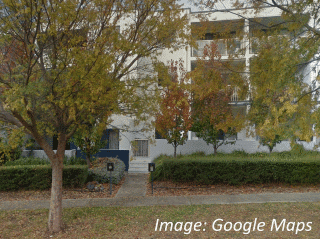I questioned the policy basis for this distinction, in view of the classical economic rationale for having a patent system, viz., to provide an incentive for individuals and businesses to engage in the risky process of invention, development, and marketing of new products and services. Which is all very well when this process of commercialisation actually takes place, and there is a genuine investment to be protected. But that is not always the case. Sometimes, the only ‘investment’ is in the preparation and filing of a patent application. And where the claimed invention is software-implemented, a suspicion may arise that the real ‘work’ of innovation, which would justify the grant of exclusive patent rights under the classical rationale, can be avoided.
I believe it is this suspicion that has caused courts and patent offices – along with legislators, in those jurisdictions that have chosen to impose statutory restrictions on patenting of ‘computer programs’ – so much angst. This has led, in turn, to confusion and inconsistency in decision-making, such that the patent system can appear capricious, unpredictable, and discriminatory when applied to software innovations. This is bad for innovative businesses that can add confusion and uncertainty around the availability of patent protection, for themselves and their competitors, to all of the other risks and unknowns that they already face in developing and commercialising new products and services.
The patent system is supposed to be ‘technology neutral’, and capable of adapting to new developments and the emergence of new technologies. However, it plainly is not. The primary legal tests for determining what is, and is not, deserving of patent protection – novelty, inventive step, and the provision of a sufficient disclosure of the invention – are proving inadequate to deal fairly and consistently with computer-implemented innovations. As a result, the blunt instrument of subject matter eligibility has become the tool of choice for striking down claims that are deemed to be unworthy of protection.
 Back in February,
Back in February,  The Australian patent law and regulations provide applicants with a 12-month ‘grace period’, enabling an application to be validly filed following an inadvertent, or intentional, act of self-disclosure of an invention. As most readers will doubtless be aware, this is significant because in the absence of such provisions, any disclosure – such as publication or public use – of an invention before securing a
The Australian patent law and regulations provide applicants with a 12-month ‘grace period’, enabling an application to be validly filed following an inadvertent, or intentional, act of self-disclosure of an invention. As most readers will doubtless be aware, this is significant because in the absence of such provisions, any disclosure – such as publication or public use – of an invention before securing a  As many readers will already be aware, between mid-March and April I
As many readers will already be aware, between mid-March and April I  According to
According to  World Intellectual Property Day is celebrated each year on the 26th of April. This year, the theme is ‘Reach for Gold: IP and Sports’. To read more about World IP Day 2019, and to explore how ‘innovation, creativity and the IP rights that encourage and protect them support the development of sport and its enjoyment around the world’, feel free to
World Intellectual Property Day is celebrated each year on the 26th of April. This year, the theme is ‘Reach for Gold: IP and Sports’. To read more about World IP Day 2019, and to explore how ‘innovation, creativity and the IP rights that encourage and protect them support the development of sport and its enjoyment around the world’, feel free to  Last Thursday, 21 March 2019,
Last Thursday, 21 March 2019, 
 Following-on from its
Following-on from its  Since January 2018, on an approximately monthly basis, I have been taking snapshots of
Since January 2018, on an approximately monthly basis, I have been taking snapshots of  For a long time now the number of patent applications filed in Australia has been increasing. For example, between 2009 and 2018 the total number of standard patent applications rose by over 25%, to nearly 30,000. This growth has been driven by foreign applicants, with the number of applications filed by domestic applicants being, at best, steady. There has, however, been a clear downward trend in provisional applications – which are predominantly filed by Australians, and represent the most common first-step into the patent system – where numbers have fallen by 22% over the same period.
For a long time now the number of patent applications filed in Australia has been increasing. For example, between 2009 and 2018 the total number of standard patent applications rose by over 25%, to nearly 30,000. This growth has been driven by foreign applicants, with the number of applications filed by domestic applicants being, at best, steady. There has, however, been a clear downward trend in provisional applications – which are predominantly filed by Australians, and represent the most common first-step into the patent system – where numbers have fallen by 22% over the same period. Since commencement of the Raising the Bar patent reforms in 2013 there has been a potentially fatal trap in the Australian rules relating to divisional applications. I have always thought it inevitable that someone would eventually fall into this trap – and practically certain that when it did happen, the applicant would be from the United States. A recent decision of the Australian Patent Office, in which a US-based applicant has been denied the opportunity to convert an application into a divisional of an earlier filing, in order to avoid having one of its own previous applications cited as invalidating
Since commencement of the Raising the Bar patent reforms in 2013 there has been a potentially fatal trap in the Australian rules relating to divisional applications. I have always thought it inevitable that someone would eventually fall into this trap – and practically certain that when it did happen, the applicant would be from the United States. A recent decision of the Australian Patent Office, in which a US-based applicant has been denied the opportunity to convert an application into a divisional of an earlier filing, in order to avoid having one of its own previous applications cited as invalidating  Today, 13 February 2018,
Today, 13 February 2018, 
 Last week,
Last week,  In the 2018 calendar year, the number of standard patent filings in Australia in grew modestly, by 3.6%, to 29,960. This growth was reflected in both direct national filings, up from 9,007 to 9,046, and National Phase filings under the Patent Cooperation Treaty (PCT), up from 19,898 to 20,914. Meanwhile, the number of provisional applications filed fell once again, by 5.2% from 5,182 to 4,943. Applications for the
In the 2018 calendar year, the number of standard patent filings in Australia in grew modestly, by 3.6%, to 29,960. This growth was reflected in both direct national filings, up from 9,007 to 9,046, and National Phase filings under the Patent Cooperation Treaty (PCT), up from 19,898 to 20,914. Meanwhile, the number of provisional applications filed fell once again, by 5.2% from 5,182 to 4,943. Applications for the  There may have been little rest and relaxation over the Christmas and New Year period for lawyers working on behalf of the Australian Patent Office because, as
There may have been little rest and relaxation over the Christmas and New Year period for lawyers working on behalf of the Australian Patent Office because, as  On 10 January 2019, the Australian Competition and Consumer Commission (ACCC) commenced a public review of the proposed merger of
On 10 January 2019, the Australian Competition and Consumer Commission (ACCC) commenced a public review of the proposed merger of 